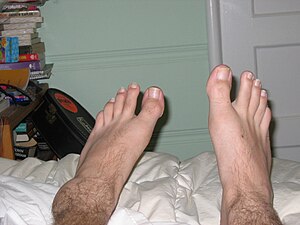 Image via WikipediaDid you know that there are shoes out there that are made specifically for diabetics? Well there are! A lot of people with diabetes face neuropathy, which in short, means that their feet are numb, so they can’t feel their feet at all. This means that they can’t feel when they cut their feet or burn them. That is why it is especially important for diabetics with neuropathy to pay extra attention to their feet. What happens is that regular shoes can cause friction and over time, constant friction can cause a cut, which in turn if not treated, will open the cut further, become infected and an ulcer. If the ulcer is not treated, it will become gangrene and the infection attacks the whole foot and the only treatment can be amputation of the foot.
Image via WikipediaDid you know that there are shoes out there that are made specifically for diabetics? Well there are! A lot of people with diabetes face neuropathy, which in short, means that their feet are numb, so they can’t feel their feet at all. This means that they can’t feel when they cut their feet or burn them. That is why it is especially important for diabetics with neuropathy to pay extra attention to their feet. What happens is that regular shoes can cause friction and over time, constant friction can cause a cut, which in turn if not treated, will open the cut further, become infected and an ulcer. If the ulcer is not treated, it will become gangrene and the infection attacks the whole foot and the only treatment can be amputation of the foot.So in order to protect their feet better, there are specialized shoes that can be made. It’s not just neuropathy that these shoes help with, but they also help with poor circulation and foot deformities. If you have hammertoes, bunions, flatfeet or other deformities. The shoes can be formed fitted to keep your feet and in turn the rest of your body in balance.
The shoes prevents foot problems such as foot ulcers, because it lowers the friction and pressure put on the foot. That in turn prevents infection and amputation, which is what has to occur if an infection goes untreated for long periods of time. The protection comes from inserts that form to your feet and the use of softer materials so that there is no rubbing that causes friction.
If you have diabetes, you should check into diabetic shoes, especially if you have neuropathy. Upstate Footcare can fit you in a pair! Give us a call at 877-941-FEET (3338) and set up an appointment! Or check out our website.




